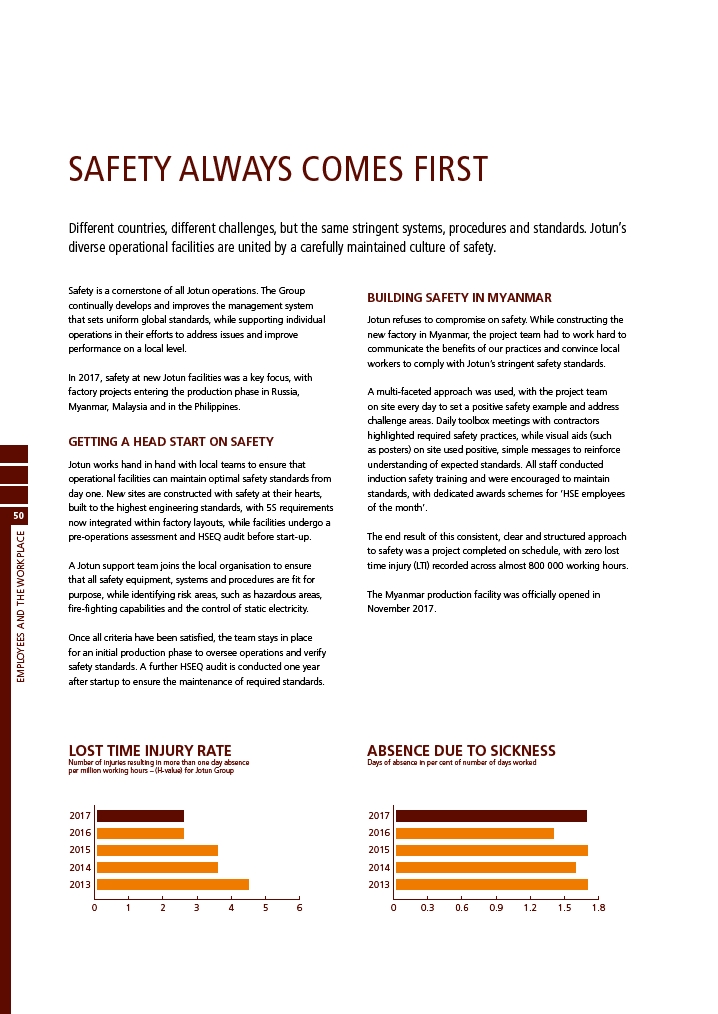
50
EMPLOYEES AND THE WORKPLACE
SAFETY ALWAYS COMES FIRST
Different countries, different challenges, but the same stringent systems, procedures and standards. Jotun’s
diverse operational facilities are united by a carefully maintained culture of safety.
Safety is a cornerstone of all Jotun operations. The Group
continually develops and improves the management system
that sets uniform global standards, while supporting individual
operations in their efforts to address issues and improve
performance on a local level.
In 2017, safety at new Jotun facilities was a key focus, with
factory projects entering the production phase in Russia,
Myanmar, Malaysia and in the Philippines.
GETTING A HEAD START ON SAFETY
Jotun works hand in hand with local teams to ensure that
operational facilities can maintain optimal safety standards from
day one. New sites are constructed with safety at their hearts,
built to the highest engineering standards, with 5S requirements
now integrated within factory layouts, while facilities undergo a
pre-operations assessment and HSEQ audit before start-up.
A Jotun support team joins the local organisation to ensure
that all safety equipment, systems and procedures are fit for
purpose, while identifying risk areas, such as hazardous areas,
fire-fighting capabilities and the control of static electricity.
Once all criteria have been satisfied, the team stays in place
for an initial production phase to oversee operations and verify
safety standards. A further HSEQ audit is conducted one year
after startup to ensure the maintenance of required standards.
BUILDING SAFETY IN MYANMAR
Jotun refuses to compromise on safety. While constructing the
new factory in Myanmar, the project team had to work hard to
communicate the benefits of our practices and convince local
workers to comply with Jotun’s stringent safety standards.
A multi-faceted approach was used, with the project team
on site every day to set a positive safety example and address
challenge areas. Daily toolbox meetings with contractors
highlighted required safety practices, while visual aids (such
as posters) on site used positive, simple messages to reinforce
understanding of expected standards. All staff conducted
induction safety training and were encouraged to maintain
standards, with dedicated awards schemes for ‘HSE employees
of the month’.
The end result of this consistent, clear and structured approach
to safety was a project completed on schedule, with zero lost
time injury (LTI) recorded across almost 800 000 working hours.
The Myanmar production facility was officially opened in
November 2017.
0 1 2 3 4 5 6
2017
2016
2015
2014
2013
0 0.3 0.6 0.9 1.2 1.5 1.8
2017
2016
2015
2014
2013
LOST TIME INJURY RATE
Number of injuries resulting in more than one day absence
per million working hours – (H-value) for Jotun Group
ABSENCE DUE TO SICKNESS
Days of absence in per cent of number of days worked